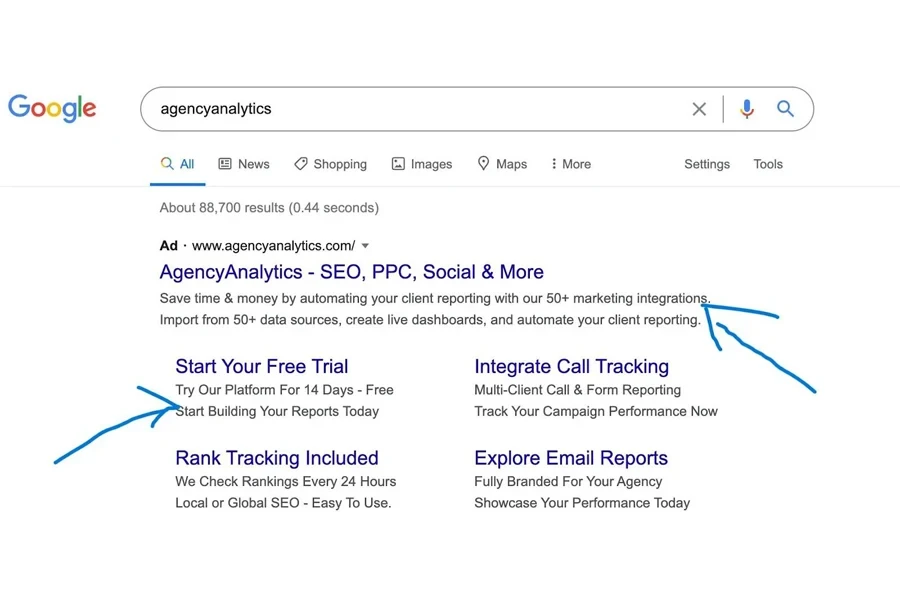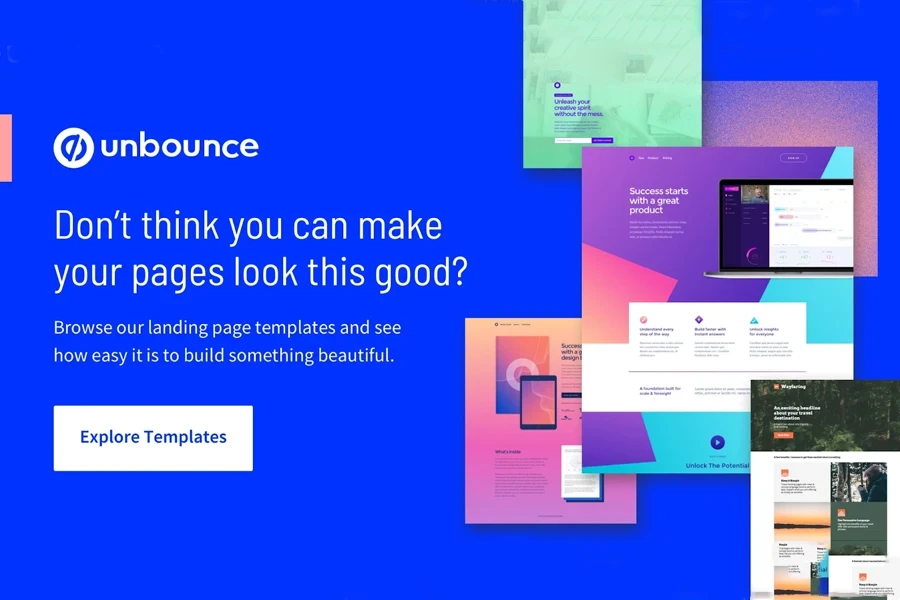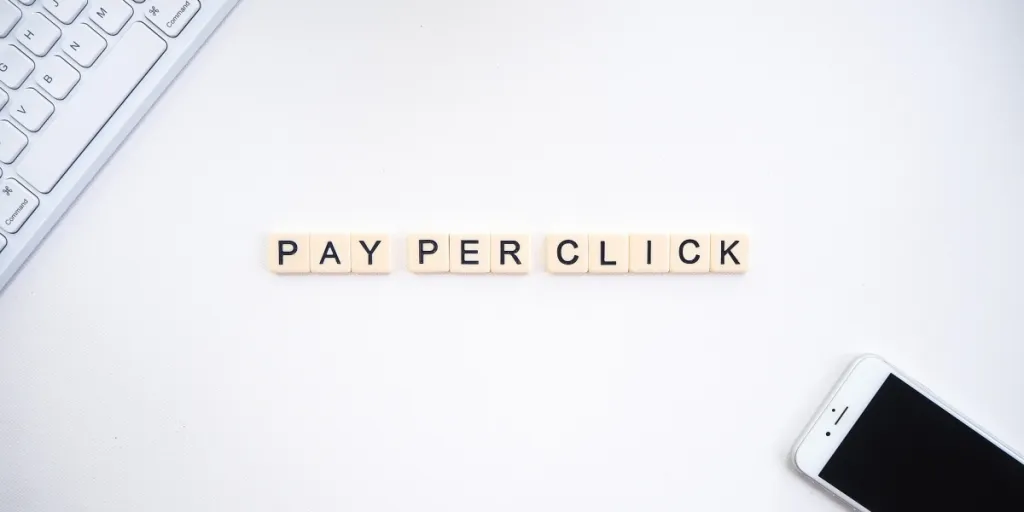How well do businesses understand the concept of “paid advertising?” Do they feel confident enough to launch and manage successful pay-per-click (PPC) strategies? Stats show that 55% of small U.S. businesses actively engage in online marketing, but how to get the most from PPC advertising remains elusive for many.
However, all marketers should at least understand the basics of PPC advertising. This guide will provide expert advice on the benefits of paid advertising and how to launch succesful PPC campaigns in 2024.
Table of Contents
Understanding the basics of PPC advertising
Steps businesses can take when creating PPC campaigns
4 best practices to keep in mind when running a PPC strategy
Final words
Understanding the basics of PPC advertising

PPC advertising lets businesses spend some cash to display their website on SERPs (search engine result pages) after specific keyword searches. However, retailers only pay when users click the ad—so displaying it won’t attract costs. PPC is a great way to generate quality leads and high ROI, but only when brands implement it well.
Although PPC ads appear more on search engines, retailers can also use them on social media platforms—though most businesses prefer CPM (cost-per-thousand impressions) on social channels. Beth Chernes, an SEO consulting expert, explains that PPC campaigns can quickly attract customers, directing them to a business’s services immediately. This means that PPC complements an SEO strategy by providing quick wins while organic reach grows.
Steps businesses can take when creating PPC campaigns
Now that brands understand PPC advertising’s benefits, they can create a quality campaign. The following steps will show brands how to create PPC campaigns on platforms like Google AdWords.
1. Define the campaign’s parameters
First, start the campaign-building process by setting parameters—this ensures the ad targets the right people and performs well. Are business goals already set? Then align them with the ad campaign and see how well it will contribute to achieving them.
Retailers must also decide on their desired results, such as brand awareness, visits, and sales, and set a budget for accomplishing them. Lastly, these goals can help define the target audience.
2. Set specific goals and related metrics

Goals should never be standalone. They must always match with business objectives/parameters. More importantly, businesses should decide how they will measure these goals. However, remember that goal metrics differ from campaigns, so brands must always treat them differently. Here are some common PPC goals and their related metrics.
- Brand awareness: This goal gauges audience familiarity with the brand. Businesses can measure it by tracking social engagement, direct traffic, and surveys.
- Lead generation: This goal happens when retailers combine the perfect homepage with their PPC strategy. They can track it through Google Ads’ tracking pixels or UTM parameters from other tools like HubSpot.
- Promotions: Another great goal for PPC ads is that promotions can help attract new buyers and renew the interest of returning customers. Businesses can track their ad-driven users with limited-time offers of discounts, unique discount codes, and dedicated sign-up pages.
- Sales: This goal shows how many products/services businesses sell from PPC efforts. They can easily track it with attribution reporting or CMS software.
- Site traffic: Do businesses have high-quality content? Then, increasing site traffic is the perfect goal for their PPC campaign. The better the content, the higher the chances of visitors converting.
3. Select the preferred campaign type
Where and how would businesses advertise their paid campaign? That’s what brands must consider next. Luckily, they have multiple options, with choices depending on where they can reach more of their target audience. As a rule of thumb, businesses can start small and adjust their campaigns gradually.
Remember that the “start small” approach doesn’t cut out using different methods. Businesses can combine any type listed below—but they must never stop testing and refining their strategies.
- Search ads: These are the most common PPC text ads in search results.
- Social ads: Instead of SERPs, these PPC ads target social platforms like LinkedIn, Instagram, X (formerly Twitter), and Facebook. They usually appear on the audience’s feed or other sections of their profiles.
- Display ads: Instead of text only, these ads use images for a more visual experience. They appear on external websites, including social media. Retailers can purchase them through networks like GDN (Google Display Network).
- Google Shopping: E-commerce sites also have their type of PPC ads. These ads show prices, product images, and short descriptions based on target keywords.
- Remarketing: These ads focus on previous visitors who left without performing the desired action. With PPC ads, businesses can use cookies or contact lists to reach these potential customers.
4. Keyword research is essential—don’t neglect it
Campaigns often consist of different ad groups, and PPC advertising is no different. However, businesses must set keywords for each ad group so search algorithms know where and when to display them. A great way to maximize keywords is by adding one to five per ad group.
But just any keyword won’t work. Keywords must be highly relevant to the ad group’s theme, or the quality score will be lower. If some keywords don’t fit the ad group, businesses can create separate ones. Keywords are also not permanent—retailers can adjust them throughout the PPC campaign.
Speaking of adjusting keywords, businesses should also review their list regularly. This helps them remove keywords with low or undesired performance and bid more on those that do. Although choosing the right keywords is necessary, retailers won’t get it perfectly on the first try—don’t be afraid to experiment with new keywords.
5. Use Google Analytics tracking capabilities
After creating the campaign, businesses need a reliable way to track performance. One of the most popular (and free) tools for this purpose is Google Analytics. It offers insights into user interactions, website performance, and the content with the most visitors. Google Analytics provides valuable data that can help improve PPC advertising and other marketing strategies.
4 best practices to keep in mind when running a PPC strategy
Retailers and brands should follow some best practices before spending their hard-earned money on advertisements. Here are some PPC strategies to help maximize efforts and budgets. This discussion will focus specifically on paid search ads, the ones seen in search engines.
1. Craft an engaging PPC ad copy

Bidding on targeted keywords places an ad in front of the right audience, while compelling ad copy encourages clicks. Ads must align with the searcher’s intent by clearly offering what they seek. How can businesses ensure their ads match with search intent? By considering customers’ needs and motivations. Ask the following questions: What are their pain points? Why do they make purchasing decisions? How can the product address their needs?
Answering these questions helps build a list of targeted keywords for the ad copy. However, search ads include a headline, URL, and brief description, each with character limits. So, if businesses want to maximize this space, they can do the following:
- Speak directly to the target audience.
- Include the main keyword.
- Provide a clear and actionable CTA.
- Make the offer appealing.
- Use language consistent with the landing page.
- Perform A/B split tests.
2. A/B test PPC ads before launching
Marketers rarely release something to their audience without testing it first. This principle applies to PPC campaigns as well. As mentioned earlier, A/B testing is crucial to any paid ad campaign. But what’s the actual goal of testing PPC ads?
The primary goal of testing is to increase the clickthrough and conversion rate. Hence, ads have four key elements to test: headline, description, landing page, and target keywords. Interestingly, any changes (big or small) to any of these parts can significantly impact results. Therefore, make changes one at a time to track improvements accurately.
Since businesses can test many variations individually, it’s better to list potential options and give them priorities based on potential impact. Lastly, allow ads to run long enough to gather sufficient data and test them early to avoid wasting the budget on poorly performing ads.
3. Optimize landing pages

Arguably, the most crucial part of PPC, after the ad copy, is the landing page visitors see after clicking the ad. This page must be highly targeted, relevant to the ad, fulfill the promise, and provide a seamless experience. After all, the landing page’s purpose is to convert visitors into leads or customers, not to chase them away.
Additionally, a high-converting landing page improves the Quality Score. A higher Quality Score translates to better ad placements. But nothing hurts PPC profits more than a poorly designed landing page. What should a PPC landing page include to boost conversions? Here are the essentials:
- A strong headline matching the search ad.
- Clean design and layout.
- Responsive form with a prominent CTA button.
- Specific and relevant copy targeting keywords.
- Delivery of the promised offer from the ad.
- A/B tested for optimization.
4. Maximize the campaign’s ROI

Maximizing PPC campaign ROI involves considering customer lifetime value and acquisition costs. These points help determine the budget for acquiring new leads and how much businesses can spend on paid advertising. Here are the inputs and outputs businesses should focus on: 1) reducing cost per lead (CPL) and 2) increasing revenue. Several factors influence these, so here’s a breakdown:
Ways to decrease input
- Setting an ad budget before starting.
- Creating highly relevant ads at lower CPC.
- Improving the Quality Score to reduce click costs.
Ways to increase revenue
- Follow landing page best practices to boost conversion rates.
- Target quality leads with specific ads, increasing the likelihood of conversions and customer acquisition.
Final words
PPC may have been around for a while (since the 1990s), but it’s gaining even more attention today. Usually, paid advertising involves capturing attention, which is not easy in today’s society. However, PPC offers the perfect solution for preventing wasted budgets, which is why PPC advertising is one of the best ways to reach audiences without relying on organic rankings.





 Afrikaans
Afrikaans አማርኛ
አማርኛ العربية
العربية বাংলা
বাংলা Nederlands
Nederlands English
English Français
Français Deutsch
Deutsch हिन्दी
हिन्दी Bahasa Indonesia
Bahasa Indonesia Italiano
Italiano 日本語
日本語 한국어
한국어 Bahasa Melayu
Bahasa Melayu മലയാളം
മലയാളം پښتو
پښتو فارسی
فارسی Polski
Polski Português
Português Русский
Русский Español
Español Kiswahili
Kiswahili ไทย
ไทย Türkçe
Türkçe اردو
اردو Tiếng Việt
Tiếng Việt isiXhosa
isiXhosa Zulu
Zulu